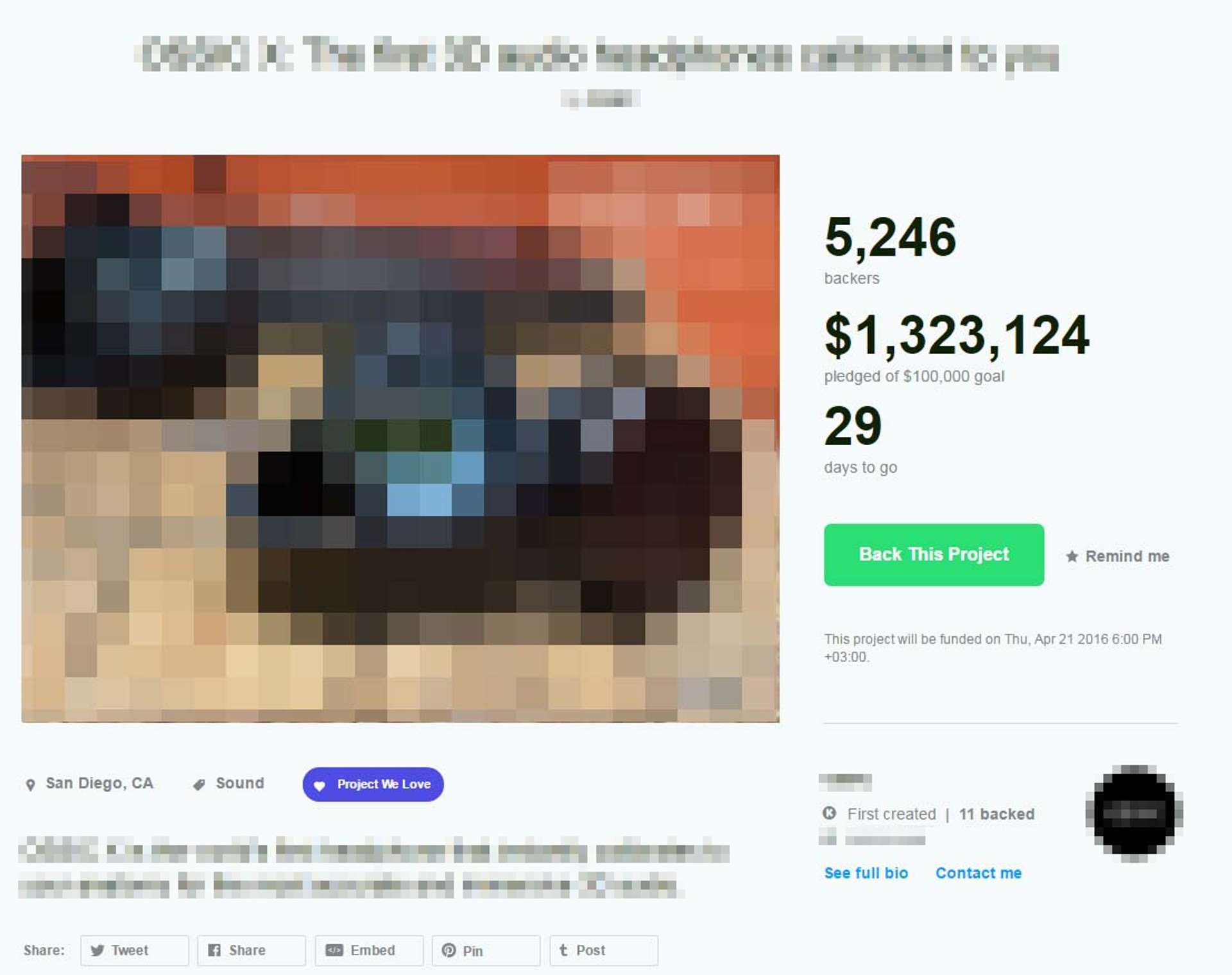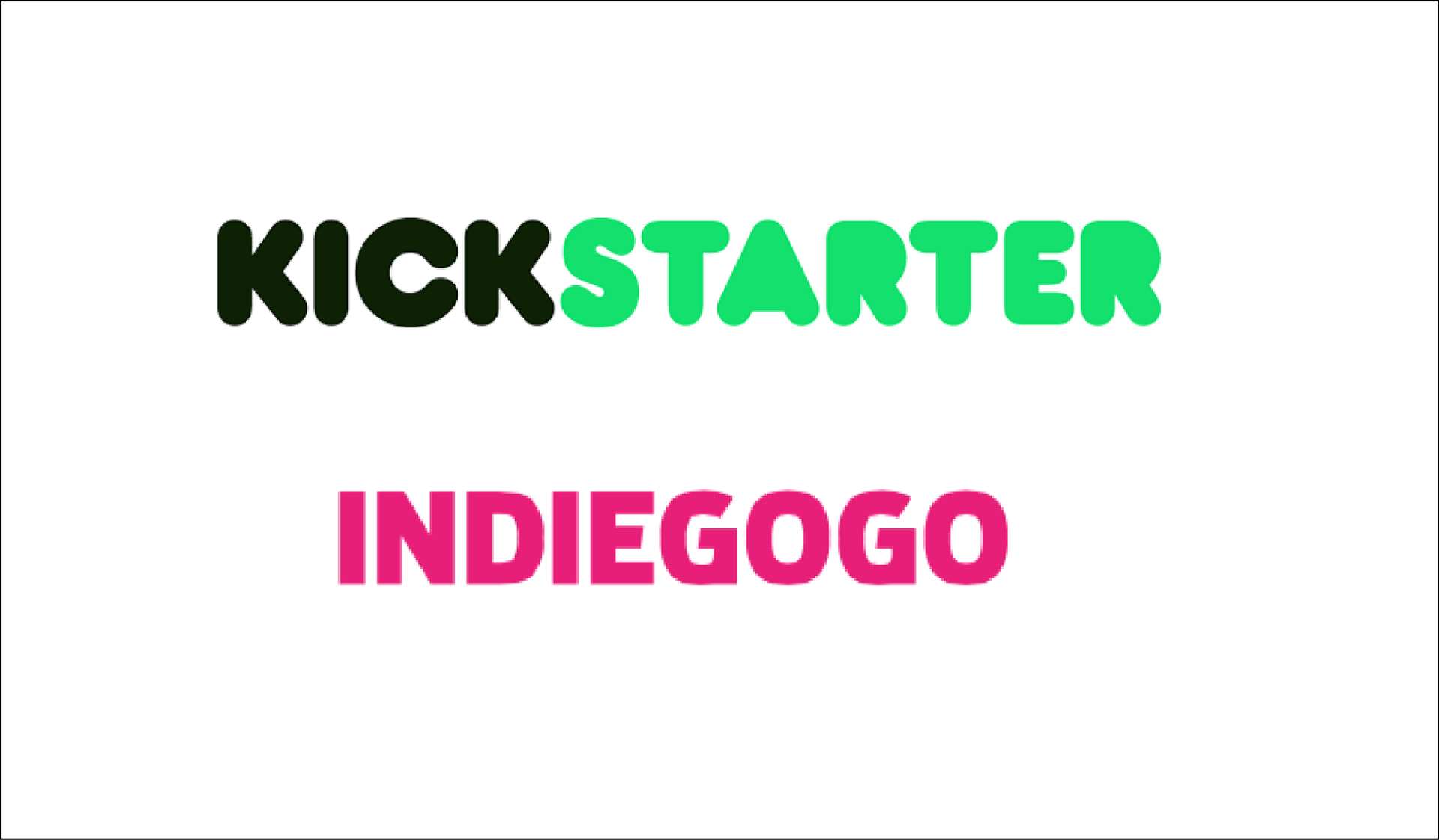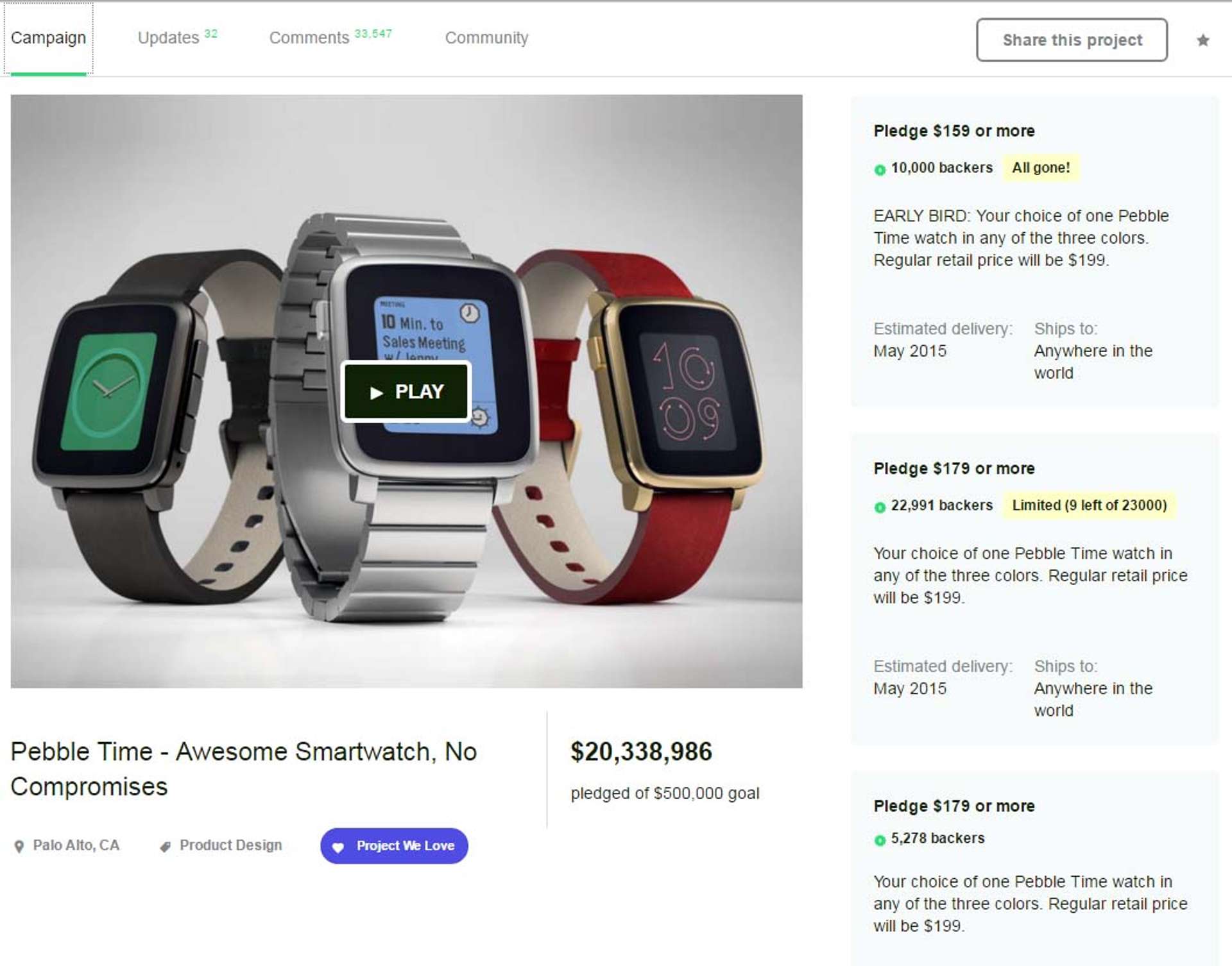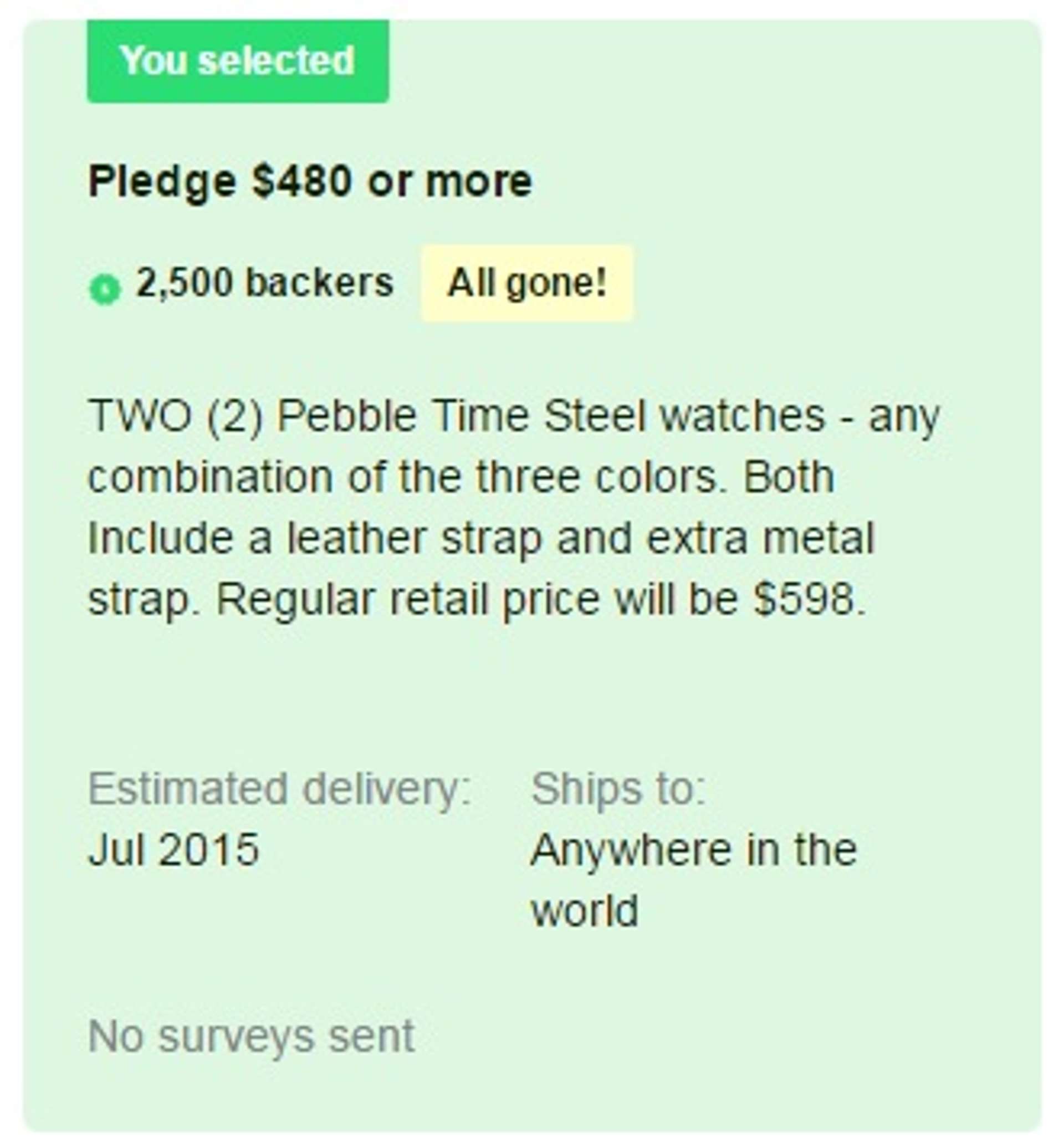Crowdfunding is an exciting way of purchasing cutting edge design and technology, whilst also getting hands on in the development of some interesting and unusual ideas that typical investment routes may not favour or produce.
The question is, whether crowdfunding is an exciting and enjoyable journey, or a black hole of lost money and bad experiences?
In my experience, if you know what to expect before you jump in, it can be exciting and worthwhile, and you will end up with some unique and exclusive items!
At the time of writing I have backed 20 separate projects on Kickstarter (My backed projects) since I opened my account in Aug 2014. In that time I have backed projects ranging in value from £14 up to $495. This gives me a reasonable view of the ins and outs of the process.
In this article I have outlined my experiences and attempted to point out some of the pitfalls and bad assumptions people tend to make the first time they use crowdfunding.
I hope this article will help you avoid the common mistakes and get on with enjoying the rewards!
What is Crowdfunding? #
Typically when you have a great idea, but not enough cash to make it happen, you need to get yourself an investor. Traditionally this meant pitching your idea to some rich guys or gals (think Dragons Den) who then decided whether it was feasible or not as an investment. Your idea may be a great idea, but it might have niche or limited appeal, thus limiting overall value to an investor. It could also be something that traditional investors don't have the foresight to appreciate, like cutting edge technology.
This is where crowdfunding comes in.
Crowdfunding allows you to generate the money you need, but rather than one or two investors investing a large amount of money, it involves a large amount of investors investing a small amount of money. Same outcome, different method. This has a few advantages:
- If enough people are willing to stump up money to make your idea a reality, then maybe it IS a good idea
- You gain the money you need to make the idea a reality
- You have a large community to gain ideas and feedback from
- You have your first batch of customers already (assuming you are producing something)
Where can I go to get involved? #
If you want to get involved in crowdfunding there are two main places that you should probably start with. The first is called Kickstarter:
...and the second is called Indiegogo:
There are probably more crowdfunding websites out there, but these two have both been around a while and tend to dominate. In terms of my experience with crowdfunding, I have only actively used Kickstarter, so all of my comments in this article are based on my experiences there. Although the basic principles and ideas are the same on both sites.
So how does it work, and what do I get in return? #
Basically, the way it works is that the creator of the product provides information on what they intend to create or provide to you. They also state the minimum total amount of money they need to allow the project to become a reality.
The creator also sets up the "rewards" they will provide if you "pledge" a certain amount of money (you could effectively read "reward" as "product" and "pledge" as "give them"). It should be noted that both the reward and the amount it will cost is set by the creator, not you, and is typically representative of the items value.
Once the campaign is started by the creator people are allowed to pledge money through the "pledge levels" (see the next section for details) for a set amount of time (usually a month). Over this time, the creator must get enough people to pledge money to support their product to ensure they achieve the monetary target they set at the beginning of their campaign.
If they don't reach the target, the campaign fails, nobody is charged any money, and the creator doesn't have to create the product. However, if the target is reached by the end of the campaign the money is taken from all the backers and given to the creator, who is then contractually obliged to (at least attempt) to produce or create what they set out in the campaign.
You can see an example below of some of the information provided. I have pixilated the names and pictures as this campaign is live at the moment, and as I know nothing about the product I would rather not unintentionally promote it!
- 5246 backers
- the target was to raise $100,000 and so far they have $1,323,124 so it certain this campaign will be successful unless a large majority of the backers pull out at the last minute
- there are 29 days left before the campaign closes. At that point the money is taken and the creation of the product begins

It should be noted that if you back a campaign you will not be charged any money until the campaign finishes. Up until the campaign finishes you can cancel your pledge and you will not be charged any money.
However, once the campaign finishes you will be charged for the product and cannot get a refund unless the creator agrees to refund your money or is proved to be fraudulent. At which point you would effectively need to take the appropriate legal action.
What are reward/pledge levels and how do they work? #
The pledge/reward levels are set up by the creator to give you some choice, as you are only allowed to select a single pledge level. The different pledge levels are a combination of the following (I have used the Pebble Time campaign as an example due to its popularity and the fact it is now finished link):
- Lower prices for backing the campaign early. Usually called "early bird" and have a limited availability. If the product is popular these places will disappear fast!
- Different products. For example with the Pebble Time, there was the basic "Pebble Time" and the premium "Pebble Time Steel"
- Multiples of the same product. As you are only allowed to select a single reward/pledge this means you cannot, for example, get multiples of the same product. To get around this creators will often make a pledge level that allows the purchase of multiples. For example, one of the pledge levels may say "2 Pebble Time Steel Watches"
You may have noticed in the above picture that the pledge prices actually have "or more" appended to the end of the price. What this effectively means is that the minimum you can pledge to receive the stated reward is, in the example above, $179, but you can pledge more if you wish.
As mentioned earlier, you can only select one pledge level, and you will only receive what is detailed in that pledge. If you select a pledge level, and then pledge twice the money in the hope you can have two, you will be disappointed...so be careful!
So how is this different from buying something from an online shop? #
Well...this is a very important point, and often the main cause of people's complaint with the whole process. Crowdfunding is definitely not the same as buying something from Amazon or any other online retailer. The main reason for this is the time that you will have to wait to receive the product.
Each campaign will state a date they expect to deliver the product to your door. For example in the pebble campaign above you can see that the delivery date given was stated as "May 2015". For my particular reward on the Pebble Time campaign I had an expected delivery of "July 2015"
When did I receive the reward? Well although I can't remember the exact day they landed at my door, I received the tracking email 16th September 2015...so my guess would be around the 25th September 2015...and it doesn't end there. That is only when PART of the reward landed at my door. The "extra metal strap" mentioned above was delayed further due to production issues.
...so on a campaign that was run by a company that has used kickstarter previously to launch their original smartwatch (the original Pebble). They managed to provide an estimated date that was wrong by approximately one and a half months, and had further delays beyond that...and that was my specific delay, which will have been longer for some people.
My point is that:
- if you look something up on a crowdfunding website and are expecting to be able to have it in a short space of time, crowdfunding is not for you
- if you are willing to wait until the estimated delivery date but no longer, crowdfunding is not for you
- if you want the item to replace something, and need it within a set timeframe, crowdfunding is not for you
- I would also not advise getting something from crowdfunding as a present for someone as you may overshoot the date
Patience is essential, otherwise you are going to go crazy! I can only think of one campaign where I received my reward on time.
...and currently I have a project I have backed that had an estimated delivery of April 2015. I still don't have the reward, and don't expect to get it till maybe later this year!
Is it possible for me to lose my money? #
The short answer is yes...and I have lost money (although not a lot).
Of the 20 projects I have backed so far I have lost my money on one of them. The project creator turned out to be a fraud, and although has promised to return my money has yet to do so (I'm not holding my breath!). In theory I could take this up with the authorities, as all project creators are bound by certain terms and conditions, but the monetary value was so small it wasn't worth my time. Although, some projects have been investigated as you can see here.
You may now be thinking that this is too risky? All I would say is that if you want to back something on a crowdfunding website common sense tends to prevail.
- Check out the creators behind the project. Although they don't have to, it is typical that they are open and willing to expose their personal or company's identity. If not I would be suspicious
- As with many things, if it sounds too good to be true it probably is
Any potentially risky items I have backed on kickstarter have been of low value. The higher value items were from established companies or traceable and easily checkable people. I would advise you to use the same approach. If you stick to this you won't go far wrong.
It is less convenient than an online shop, and potentially I could lose my money, so why would I bother? #
Ok so now we get to the plus sides!
It is not an accident that I keep backing projects on kickstarter. I enjoy the process.
Here are the main reasons I use kickstarter:
- I can find items that are simply not available anywhere else, either online or in my local shops. This is either because they are bespoke and unique ideas, or are pushing current technological boundaries
- The price you get the product for is typically reduced compared to the retail price of the product after launch
- You will be the first users of the new product
- If the campaign is run correctly you will, at least to some degree, be able to influence the direction of the product. For example a current product I am backing has a unique colour scheme that was selected by the backers (and will only ever be available to the backers, never to retail customers)
- In some cases you know that you have contributed to the start of a small company. Which can never be a bad thing!
Conclusion #
To sum up, I would say that if you are interested in purchasing unique products, and are willing to be patient, crowdfunding can be an enjoyable journey. As long as you are sensible about the products you choose to back, and stick within the limits of what you can easily afford, you are unlikely to have many (if any) problems...and at the end of the day (or maybe at the end of the year!) you will receive a unique product that in at least a small way you helped to shape and create!
🙏🙏🙏
Since you've made it this far, sharing this article on your favorite social media network would be highly appreciated. For feedback, please ping me on Twitter.
...or if you want fuel my next article, you could always:
Published





